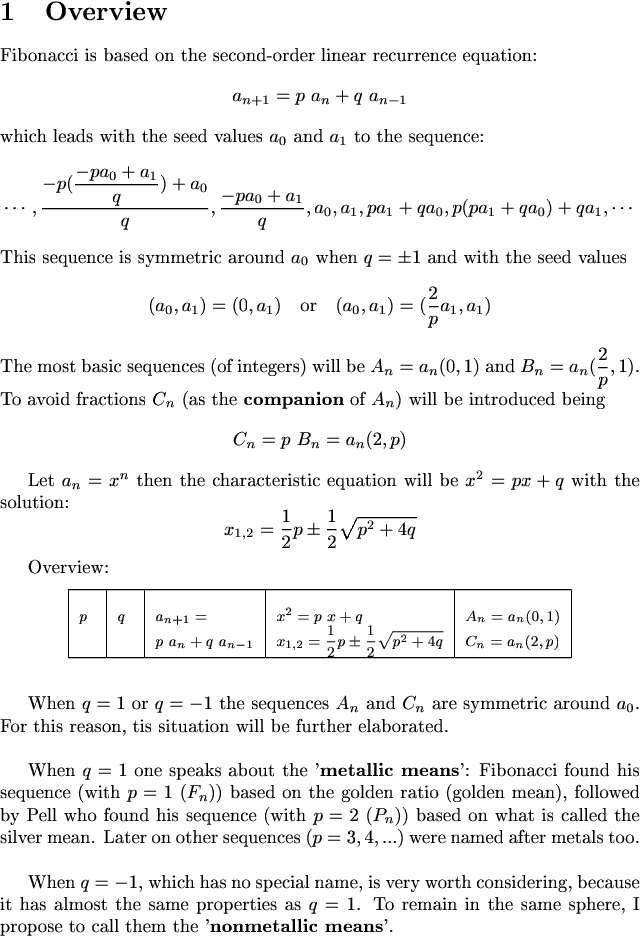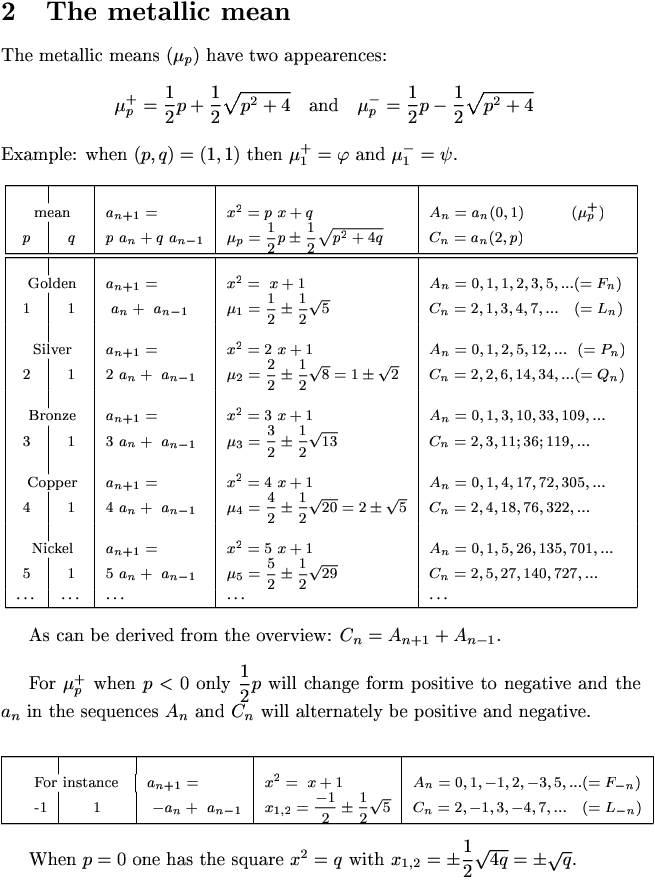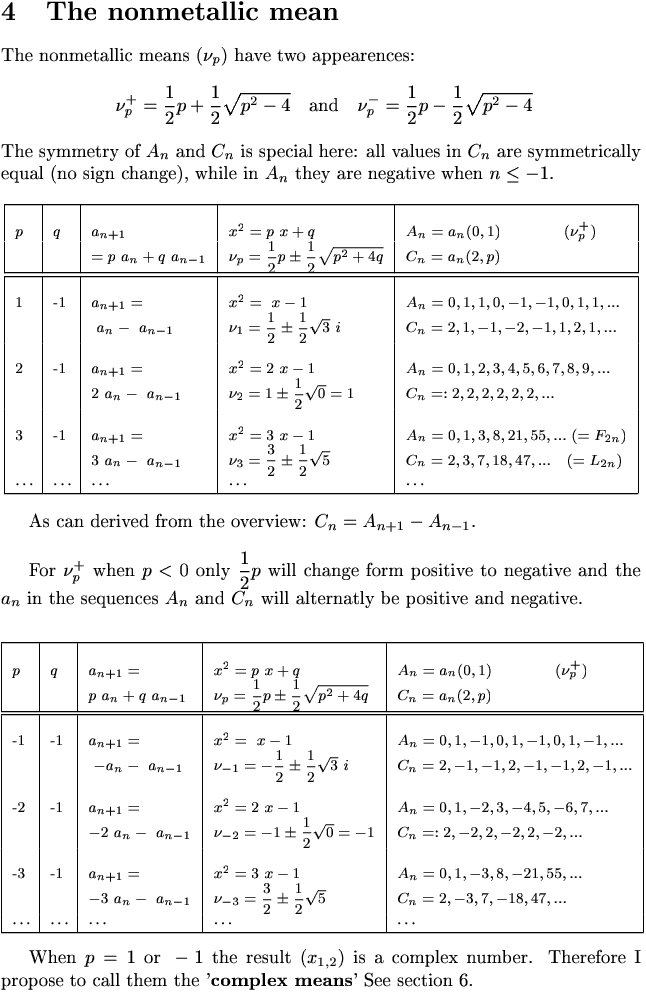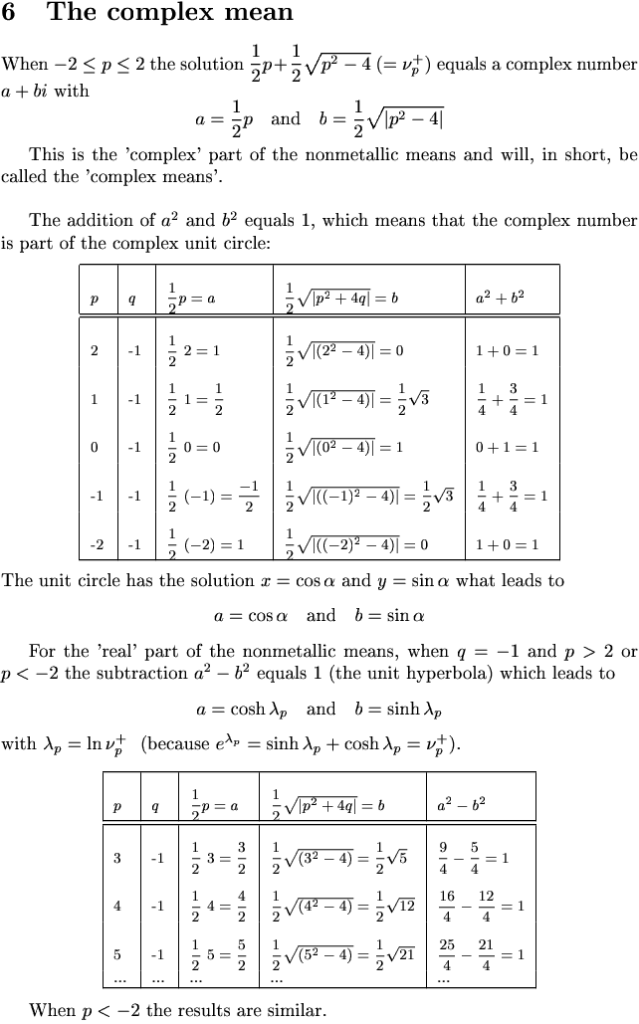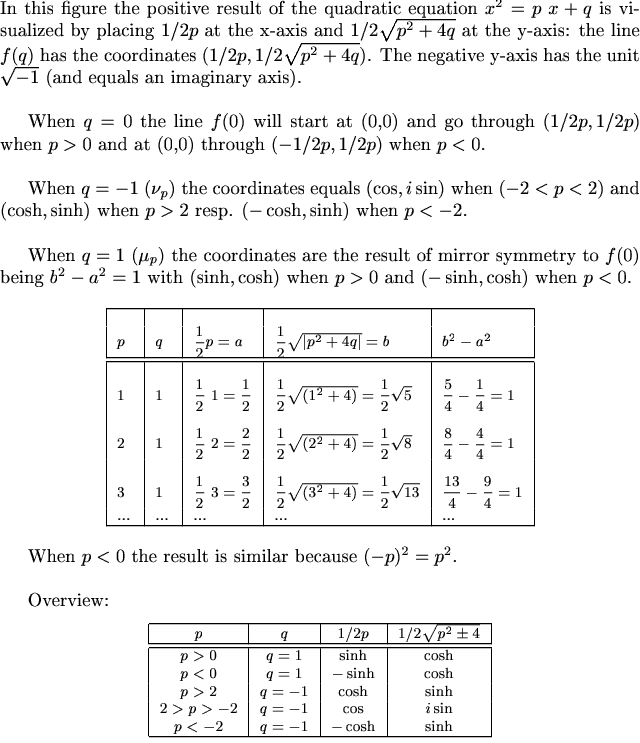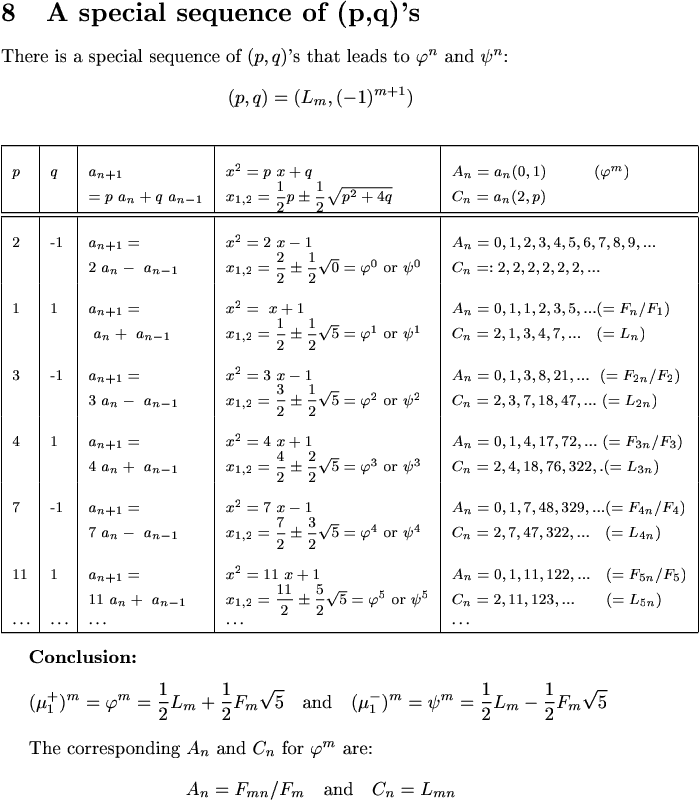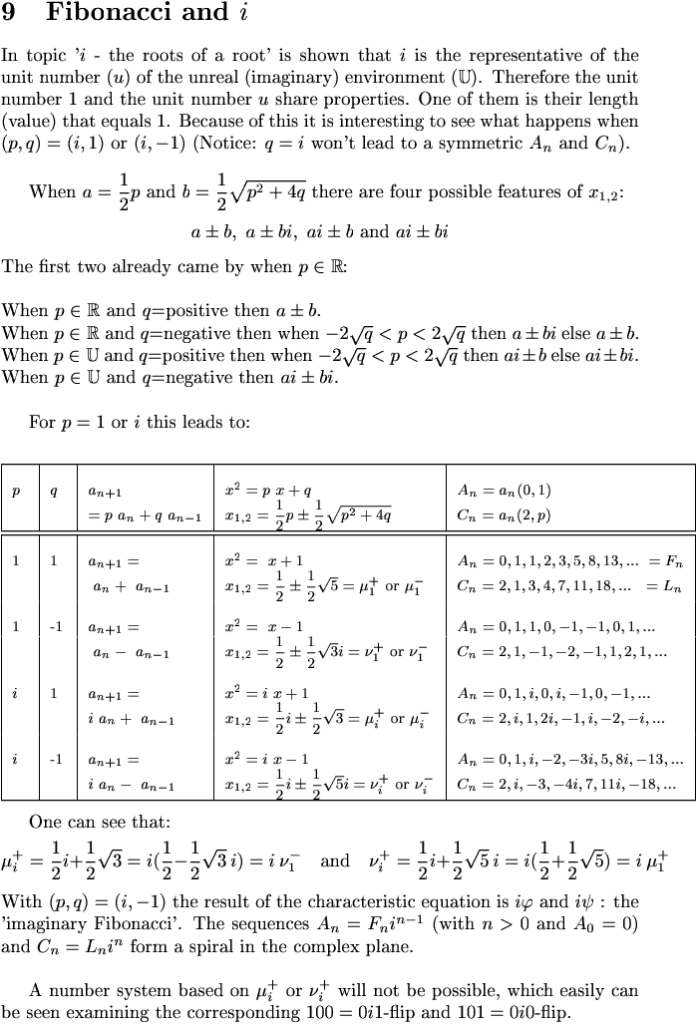A more general approach
Abstract
Fibonacci is based on a second-order linear recurrence equation with the variables p and q. When an = xn the characteristic equation leads to two possible solutions for an. An overview will give these solutions as well as the corresponding sequences with the seed values (0,1) and (2,p). The last one is called the companion of the first one. With these seed values the sequences are symmetric when q=1 or -1. For this reason this situation will further be elaborated.
When q=1 one speaks about the metallic means. Fibonacci found his sequence (p=1) based on the golden mean, followed by Pell who found his sequence (p=2) based on what is called the silver mean. Later other sequences (p=3,4,…) where named after metals too. All metalic means act in the same way. The metallic mean number systems are based on the 100=0p1 flip and therefore they are called the base 100=0p1 number systems. The silver mean and the bronze mean will be used as an example.
When q=-1, which has no special name, is very worth considering, because it has almost the same properties as q=1. Therefore we suggest a similar kind of name: the nonmetallic means. The nonmetallic mean number systems are based on the 100=0p(-1) flip, which has to be adjusted to the 101=0p0 flip (a negative 1 is not allowed). Therefore they are called the 101=0p0 number systems. When the value p lays between -2 and 2 the nonmetallic mean will become a complex mean.
A graphical interpretation showes that the metallic means and the nonmetallic means are related to the hyperbolic sine and cosine and the complex means to the sine and cosine.
There is a special sequence of (p,q)’s that relates the power of phi (and psi) to the Fibonacci sequence and the Lucas sequence. Another interesting relation is the relation between Fibonacci and i, the imaginary number.
- 1 Overview
- 2 The metallic mean
- 3 The base 100=0p1 number systems
- 4 The nonmetallic mean
- 5 The base 101=0p0 number systems
- 6 The complex mean
- 7 A graphical interpretation
- 8 A special sequence of (p,q)'s
- 9 Fibonacci and i
